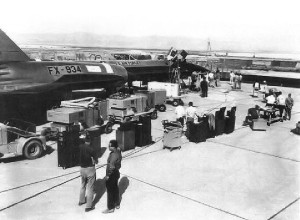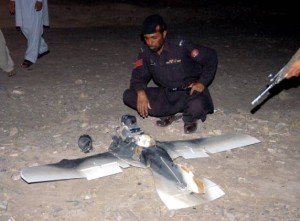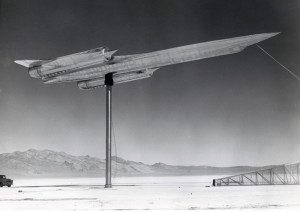In August the CIA officially acknowledged that Area 51 in Nevada does exist, and the agency came clean about their “weather balloon” and “foam party” cover stories. Area 51, located 83 miles (133 km) northwest of Las Vegas, has for over 50 years been a place of mystery. As highlighted by several media outlets, the official CIA document covers how Area 51 acted as test facility for Project Aquatone, the top secret development of the Lockheed U-2 strategic reconnaissance aircraft. It was also base for Project OXCART, the aerial reconnaissance programs, from 1954 to 1974, intended to create the successor for the U-2 spy plane, the Archangel 12 (A-12). There are still unconfirmed suspicion that the Atomic Energy Commission carried out secret projects at the site.

YF12 / A12 Prototype at Area51. Please observe the tool desks and adjustable craft benches in the foreground.
The documents were released in response to a Freedom of Information Act request submitted by the National Security Archives, in 2005. The archives submitted the request as part of a continuing study of artisans within the aerial surveillance programs and according to the CNN they were not given any explanation of why the new documents were less redacted than previous versions declassified by the agency.
As revealed in the CIA documents, the special teams developing and constructing the prototypes at Area 51 were top graduates from schools such as RISD, CCAC and Parsons, as well as experienced aviation engineers from top institutions across the US. But perhaps unexpected to some, the teams also included several artisans from fine craft studios. Not least the development of the titanium body for the Mach 3 A-12 required expertise in detailed corpus jewellery craft and fine joining and welding. They came to represent the total overlap between the “streamline moderne” designs of design and craft, high modernism, and the military applications of design and craft into Cold War armed politics.
The CIA report also reveals the A-12 related Aquiline project, a six-foot remote controlled drone designed to look like an eagle or buzzard in flight. As part of its development, the CIA had secretly set up a crack-team of ornithologists, taxidermists and wild-life artisans. The drone was according to the documents powered by a chainsaw engine, first donated by one of the artisans at site who had come up with the idea when crafting a rough decoy wood replica of the A-12 in fresh greenwood. Interestingly enough, only traces of the artisan involvement in the story is left in the CIA document (page 339-340), as much is erased by censors.
The Aquiline drone, developed in the 1960s, carried a television camera in the nose, as well as sensors and electronic surveillance equipment. It also made bird-like sounds as a mode of secret communication with ground operators. According to some sources the project was hibernated in the 1980s, but it would later become the famed high-tech Predator-drone. However, the project still seems ongoing, as the Pakistan government claim they grounded a bird-like drone over Chaman, near the Afghani border, in 2011. According to released photos this drone looks very similar to the original models of the Aquiline, even if the wood work (probably in Balsa, Ochroma Pyramidale) seems very rough and not as refined as in the earlier models.

A Pakistani Army Artisan Officer examines the taxidermic techniques of the crashed Aquiline drone grounded in Chaman 2011
The Central Intelligence Agency and Overhead Reconnaissance document


